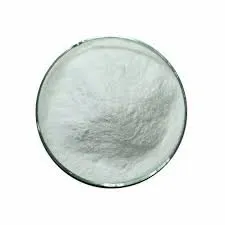
Oct . 10, 2024 14:34 Back to list
hpmc uses
Understanding the Uses of HPMC (Hydroxypropyl Methylcellulose)
Hydroxypropyl Methylcellulose (HPMC) is a versatile and widely utilized cellulose derivative that has gained significant attention in various industries due to its unique properties and functionalities. As a non-ionic, water-soluble polymer, HPMC is derived from the natural polymer cellulose through chemical modification. This article explores the multifaceted applications of HPMC across different sectors, underscoring its importance and benefits.
1. Pharmaceutical Industry
One of the most prominent uses of HPMC is in the pharmaceutical sector. It serves as a crucial excipient in drug formulations, both for solid and liquid dosage forms. HPMC is commonly used as a binding agent in tablets, helping to ensure that the active ingredients are cohesively blended and retain their shape. Additionally, its ability to form gels makes it an ideal candidate for controlled-release drug delivery systems. This property allows for a sustained release of the active pharmaceutical ingredients, which is vital for maintaining therapeutic levels in the bloodstream over extended periods. Moreover, HPMC is employed in ophthalmic preparations, acting as a lubricant to alleviate dry eyes.
2. Food Industry
In the food industry, HPMC acts as a thickening agent, emulsifier, and stabilizer. It is used to improve the texture of food products, enhance moisture retention, and extend shelf life. HPMC is also a popular ingredient in gluten-free formulations, providing elasticity and viscosity that mimic the properties of gluten in traditional baked goods. Furthermore, its ability to form films helps in the encapsulation of flavors and nutrients, making it a valuable component in functional foods and dietary supplements.
3
. Construction Industryhpmc uses

HPMC has found a prominent place in the construction industry, particularly in the formulation of adhesives, mortars, and plasters. Its water retention properties prevent rapid drying, ensuring that the mortar remains workable for longer periods. This characteristic is particularly beneficial in hot or windy conditions, where conventional products may dry too quickly. Additionally, HPMC enhances the adhesion properties of construction materials, improving the overall strength and durability of structures.
4. Personal Care Products
In the realm of personal care, HPMC is utilized in a variety of products, including lotions, creams, and gels. Its emulsifying properties facilitate the mixing of oil and water phases, resulting in stable formulations. HPMC also imparts a smooth, silky feel to cosmetic products, enhancing user experience. Moreover, it serves as a thickening agent in shampoos and conditioners, contributing to the desired viscosity and performance of hair care products.
5. Agriculture
HPMC's use extends to agriculture as well, where it is employed as a soil conditioner and in the formulation of controlled-release fertilizers. By improving soil structure and water retention, HPMC can enhance agricultural productivity. Its application in seed coatings allows for better seed germination and growth, as it can provide a protective barrier against pests and disease, ensuring higher yields.
Conclusion
The diverse applications of Hydroxypropyl Methylcellulose across numerous industries underscore its significance as a multifunctional polymer. From enhancing the efficacy of pharmaceuticals to improving food textures and contributing to sustainable construction practices, HPMC plays a critical role in modern formulations. Its safety, versatility, and effectiveness continue to make it a valuable component across various sectors, illustrating the profound impact of this cellulose derivative on everyday products and processes.
-
Versatile Hpmc Uses in Different Industries
NewsJun.19,2025
-
Redispersible Powder's Role in Enhancing Durability of Construction Products
NewsJun.19,2025
-
Hydroxyethyl Cellulose Applications Driving Green Industrial Processes
NewsJun.19,2025
-
Exploring Different Redispersible Polymer Powder
NewsJun.19,2025
-
Choosing the Right Mortar Bonding Agent
NewsJun.19,2025
-
Applications and Significance of China Hpmc in Modern Industries
NewsJun.19,2025







